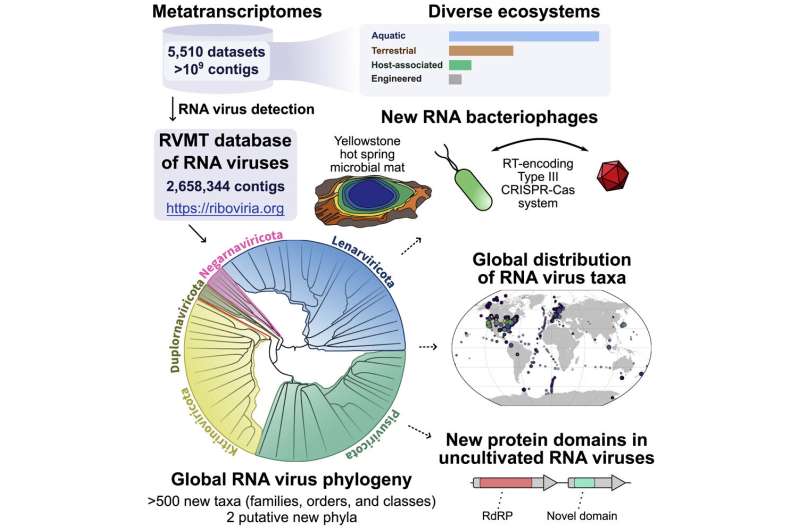Researchers build understanding of the virus universe using metatranscriptome mining

A team of researchers from the National Library of Medicine (NLM) and collaborating academic research institutions have discovered new RNA bacteriophages, viruses that attack bacteria, advancing understanding of virus evolution. Findings were published in the journal Cell.
Viruses are considered the most numerous and diverse biological entities on Earth, and researchers have a limited understanding of them. The advent of metatranscriptomics—that is, sequencing of the total RNA in a sample from a particular environment—is helping researchers uncover important features of the Earth RNA virome. In this study, researchers identified a variety of novel viruses that provide insights into the diversity, host range and evolution of RNA viruses.
Researchers mined more than 5,150 diverse metatranscriptomes from existing repositories and uncovered 2.5 million RNA virus derived sequences. This expansion corresponds to a five-fold increase of known RNA virus diversity. According to study authors, many of the discovered viruses are truly novel, being only distantly related to previously known viruses. Two groups of the most unusual viruses form potential new phyla and others are classified into numerous new classes and orders.
“The most notable discovery is the dramatic increase in the number and diversity of viruses infecting bacteria that are shown to account for a much greater fraction of RNA viruses than we previously thought,” said Eugene. V. Koonin, Ph.D., a co-author of the study and senior investigator in the Computational Biology Branch of NLM’s Intramural Research Program.
Source: Read Full Article
